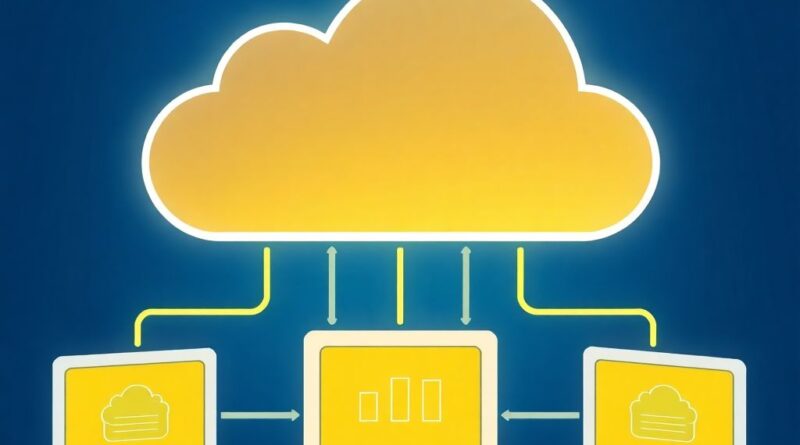Cloud Computing Services
Cloud computing has not only expanded but also deepened in complexity and capability. Let’s embark on a journey through the cloud, exploring how these services are reshaping businesses, innovation, and daily life.
What is Cloud Computing?
At its core, cloud computing refers to delivering a wide range of computing services through the internet (“the cloud”). It offers a way to access software, storage, processing power, and other IT resources on demand, avoiding the need for local hardware and infrastructure management.
The Evolution of Cloud Services
From its infancy with basic storage solutions to today’s sophisticated ecosystems, cloud computing has evolved in three primary service models:
Infrastructure as a Service (IaaS): Provides virtualized computing resources over the internet. Think of it as renting servers, storage, and networking hardware from a provider like AWS EC2 or Google Compute Engine.
Platform as a Service (PaaS): Offers a platform allowing customers to develop, run, and manage applications without the complexity of building and maintaining the infrastructure. Examples include Google App Engine and Microsoft Azure.
Software as a Service (SaaS): Delivers software applications over the Internet, on a subscription basis. Users access these applications through a web browser; think of Salesforce for CRM or Microsoft Office 365 for productivity.
Key Trends Shaping Cloud Computing in 2025
AI and Machine Learning Integration: Cloud platforms are deeply integrating AI, offering services that not only host data but analyze it, predict outcomes, and automate processes. AWS’s SageMaker and Azure’s AI suite are leading examples.
Edge Computing: With the rise of IoT, edge computing in the cloud context means processing data closer to where it’s generated, reducing latency and bandwidth use while enhancing real-time decision-making.
Hybrid and Multi-Cloud Strategies: Organizations are increasingly adopting strategies that use multiple cloud providers for different purposes, leveraging the best of each while avoiding vendor lock-in.
Quantum Cloud Computing: Early stages of quantum computing are being made accessible through cloud services, allowing businesses to experiment with quantum algorithms without the need for costly hardware.
Sustainability in the Cloud: As environmental concerns grow, cloud providers are focusing on green data centers, optimizing energy use, and offering carbon-neutral computing options.

Benefits of Cloud Computing
Scalability: Scale resources up or down based on demand, ensuring you only pay for what you use.
Cost Efficiency: Reduces the need for capital expenditure on hardware, with operational costs typically lower over time.
Global Accessibility: Access your data and applications from anywhere with an internet connection.
Disaster Recovery: Cloud services often come with built-in data backup and recovery solutions, enhancing business continuity.
Innovation: Faster deployment of applications and easier access to cutting-edge technologies like AI.
Challenges and Considerations
Security and Privacy: While cloud providers have robust security measures, the shared responsibility model means businesses must also protect their data.
Compliance: Navigating the regulatory landscape for data storage, especially across borders, can be complex.
Vendor Lock-in: Dependency on a single provider can limit flexibility, making multi-cloud strategies attractive but complex.
Data Transfer Costs: Moving large amounts of data in and out of the cloud can be unexpectedly expensive if not managed properly.
Real-World Applications of Cloud Computing
Healthcare: Secure storage and analysis of patient data, telemedicine platforms, and AI-driven diagnostics.
Finance: Real-time fraud detection, high-frequency trading platforms, and comprehensive risk assessment models.
Entertainment: Streaming services, game cloud platforms for rendering graphics, and VR/AR content delivery.
Education: Online learning platforms, virtual classrooms, and collaborative research environments.
Future Outlook
The future of cloud computing looks toward:
Further AI Integration: AI will become even more embedded, automating more aspects of cloud management and application development.
5G and Beyond: Enhanced connectivity will allow for more robust edge computing solutions integrated with cloud services.
Serverless Computing: Continues to grow, offering developers the ability to focus purely on code without managing servers.
Cloud Native Development: Kubernetes and container technologies will dominate, providing consistent environments across clouds.

